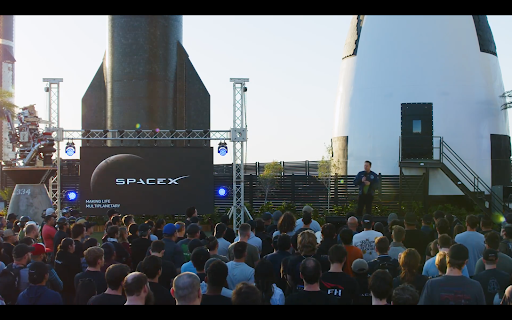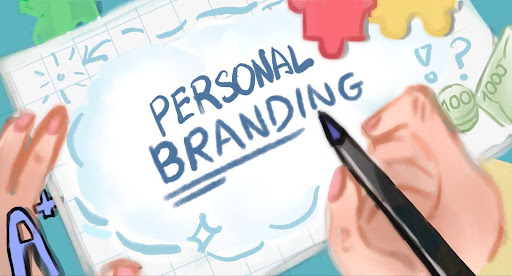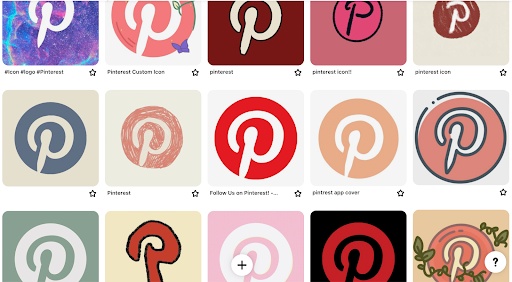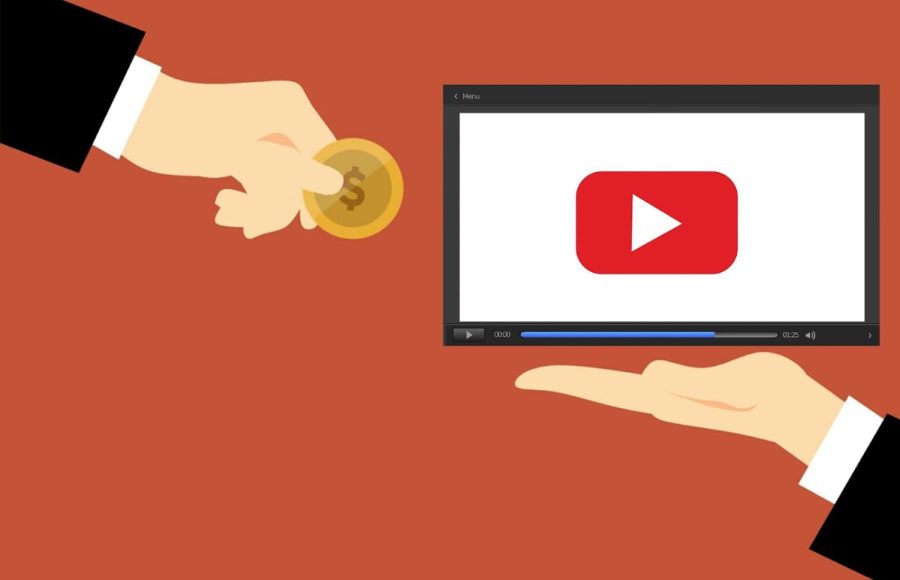Experiencing too many advertisements on YouTube? You are not alone!
YouTube, which have made about $30 billion revenue in 2021, is getting close to reaching 2.6 billion active users per month. YouTube is in fact one of the most dominant media platforms in the world. It is the second most used social media, with Facebook being the first.
Why is YouTube so popular? The reason is that we currently do not have any other platform that offers similar services. While TikTok and Instagram offer short videos just as YouTube does, there is no other well-known platform that offers a lengthy video for the users. Another reason why YouTube is popular is because everyone can access the platform. Users do not need to pay any money in order to watch the videos online. Unlike other platforms like Netflix and Apple Music, which require monthly payment, YouTube mostly does not. On YouTube, you are not required to pay anything when using its basic functions. From this, you might think that there will not be any complaints about YouTube. However, that is not the case anymore. Recently, there have been a number of voices from the users complaining about some new aspects of YouTube.
So, what are the complaints?
The main complaint which users have raised was regarding the amount of advertisements. YouTube’s source of income is from advertising. Other companies often will promote their products like apps, movies, on YouTube. In the past, many of the advertisements were included in the video by the creators themselves and the profits made from the advertisements were shared between the company and creators. However, in 2020, YouTube launched a new policy that said even if a certain channel does not earn profit from their videos, YouTube will be including advertisements on their videos from now on. This means that if the channel does not make profit from their videos, any advertisements appearing during their videos will not be shared with the creators. This will help YouTube to gain higher profits from advertisements than before.
Furthermore, YouTube has been increasing both the amount and the length of advertisements, which for the users is not happy news. Especially with advertisements that appear during the videos, which tend to interrupt the users from watching the video seamlessly.
In order to see if many people were experiencing these changes, a survey was sent out to 52 students from the International School of Sacred Heart, asking about their experiences with advertisements while using YouTube. Two of the main questions asked were if users noticed any increase in the amount and the length of advertisements in the past six months.
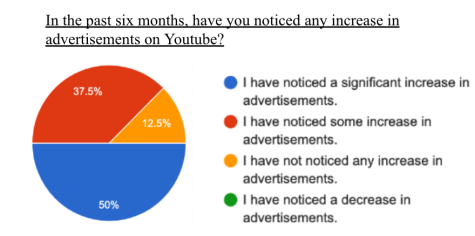
As shown in the charts on the left, about ninety percent of respondents had noticed an increase in advertisements on YouTube. Half of the students noticed a significant increase in advertisements, with 37.5% of students who noticed some increase in advertisements.
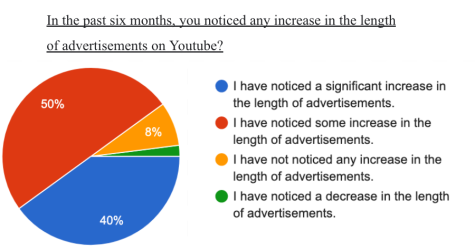 Ninety percent of the survey respondents also agreed that they have noticed an increase in the length of the advertisements recently. Fifty students agreed that they have noticed a significant increase in the length of advertisements, while 40% of students noticed some increase in the length of advertisements.
Ninety percent of the survey respondents also agreed that they have noticed an increase in the length of the advertisements recently. Fifty students agreed that they have noticed a significant increase in the length of advertisements, while 40% of students noticed some increase in the length of advertisements.
In the same survey, I also asked how this increase in advertisements on YouTube affects people’s viewing of the videos. One of the most common replies I have received was that it makes them irritated, especially if the advertisements are unskippable or longer than five seconds. Some even said that it made them stop watching the video and move on to another one. This shows that increasing the amount of advertisements will also increase dissatisfaction amongst the YouTube users. The main reason for the discontent would be that the advertisements will often show in between the videos people are watching, which leads to them having to wait five seconds to 20 seconds before being able to continue watching their video. Although it might sound like a short amount of time, if you are in a rush, or watching the video continuously, getting interrupted in the middle might make you irritated. However, some videos, mostly the longer ones, tend to contain more advertisements than the shorter ones, interrupting the users from watching a video smoothly.
Due to the increasing amount of advertisements, some people are starting to respond to this situation in their own way. According to the survey, 14.8% of respondents were willing to subscribe to YouTube Premium so that they can avoid the advertisements. This is likely to be YouTube’s ultimate goal, as with more people subscribing to YouTube Premium, it will lead to them gaining more profit since that is another main way the users pay YouTube. YouTube Premium enables the users to watch videos offline, as well as providing no advertisements. However, as of 2021, only 50 million users are subscribing to YouTube Premium according to a company called Business of Apps which, compared to the number of active users, is a small number. On the other hand, some people were using an ‘ad-blocker’, which blocks advertisements on YouTube and other sites.
However, most people are not able to stop using YouTube and switch to another platform just because they find the advertisements irritating. This is because, as mentioned before, there are no other platforms where you can watch lengthy videos and post your own videos. Instagram, although you can post long or short videos, is mostly for posting pictures. TikTok is mostly for posting short videos under one minute. Twitter is mostly for posting a few lines of words instead of using something visual. This tells us that none of the other platforms offers the range of different content YouTube does to the users.
This shows that there is just no globally used platform that does what YouTube does for its users, which means that users have no other alternatives. Although advertisements are YouTube’s main source of profit, it is questionable whether it should be increased to the point where it ends up reducing the quality of users’ viewing experience.










